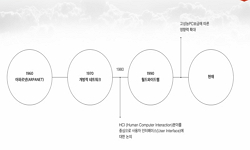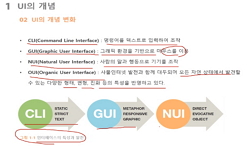현재 스마트폰 앱 서비스는 인간을 중독시키는 데에 초점이 맞춰져 있다. 인간을 중독시키는 기술의 문제는 크게 잘못된 정보에 노출, 인지 부조화 발생, 육체 및 정신 건강의 훼손, 사회관...
http://chineseinput.net/에서 pinyin(병음)방식으로 중국어를 변환할 수 있습니다.
변환된 중국어를 복사하여 사용하시면 됩니다.
- 中文 을 입력하시려면 zhongwen을 입력하시고 space를누르시면됩니다.
- 北京 을 입력하시려면 beijing을 입력하시고 space를 누르시면 됩니다.

셀프모니터링이 스마트폰 사용 습관 변화에 미치는 영향 = The impacts of self-monitoring on smartphone use habit changes
한글로보기https://www.riss.kr/link?id=A108335823
- 저자
- 발행기관
- 학술지명
- 권호사항
-
발행연도
2022
-
작성언어
-
-
주제어
Smartphone addiction ; Digital wellbeing ; Transtheoretical model ; TTM ; UX design ; 스마트폰 중독 ; 중독 기술 ; 디지털 웰빙 ; 범이론적 모형 ; UX 디자인
-
KDC
600
-
등재정보
KCI등재
-
자료형태
학술저널
-
수록면
250-265(16쪽)
- 제공처
-
0
상세조회 -
0
다운로드
부가정보
국문 초록 (Abstract)
현재 스마트폰 앱 서비스는 인간을 중독시키는 데에 초점이 맞춰져 있다. 인간을 중독시키는 기술의 문제는 크게 잘못된 정보에 노출, 인지 부조화 발생, 육체 및 정신 건강의 훼손, 사회관계 약화로 요약할 수 있다. 이처럼 스마트폰 과다 사용이 사회적 문제로 부각되면서 스마트폰 과다 사용 문제에 대한 해결책 연구도 활발하게 진행되고 있다. 스마트폰 중독에서 벗어나기 위한 기술 중 대표 기술로 사용자가 스스로 스마트폰 사용량을 인지하고 앱사용 시간을 제어할 수 있는 디지털 웰빙이 있다. 하지만 디지털 웰빙의 효과에 대한 연구는 아직 충분히 이루어지지 않았다. 따라서 본 연구에서는 사용자가 디지털 웰빙의 핵심 기술인 대시보드를 지속해서 셀프모니터링 하였을 때 사용자의 인지 및 행동 단계에 어떤 변화가 생기는지 연구한다. 연구 모형은 행동의 단계를 세분화해서 체계적으로 보는 측면이 있고, 다양한 선행 연구를 통해 이론·실용적 타당성을 입증받은 범이론적 모형(TTM)을 활용한다. 연구 대상은 디지털 웰빙에 대한 지식이 없거나 디지털 웰빙의 존재를 알더라도 관심이 없는 인원으로 한정한다. 연구는 참가 의사를 보인 89명을 실험집단과 비교집단으로 분리하여 시행하였다. 비교집단은 3주 전·후로 설문지 작성만 하고, 실험집단은 3주 전·후 설문지 작성 및 1일 1회 이상 디지털 웰빙 셀프모니터링을 하였다.
연구 결과, 디지털 웰빙 셀프모니터링은 행동 변화에 대한 관심이 거의 없고 변화에 필요한 조치를 하는데 무기력한 모습을 보이는 실험집단 PC에 유의미한 효과가 있다. 그리고 유의미한 행동 단계 변화를 보인 실험집단 PC는 행동 단계 변화 과정에서 자기효능감(SE), 의사결정균형(DB), 행동변화요소(POC)의 유의미한 변화를 나타냈다. 연구를 통해 디지털 웰빙 셀프모니터링은 스마트폰 사용 습관에 대한 확실한 인지효과가 있으며 사용자의 특성이나 스마트폰 중독 인지 정도에 따라 스마트폰 사용 습관을 개선하기 위한 행동이 발생한다는 사실을 발견했다. 다만, 발견된 효과는 디지털 웰빙 셀프모니터링 기능을 사용하는 동안에만 유효하고 디지털 웰빙을 더 사용하지 않으면 스마트폰 사용 습관은 실험 전으로 되돌아가는 것으로 나타났다. 본 연구는 디지털 웰빙의 핵심 기능인 셀프모니터링이 가장 효과를 보이는 집단을 구분하고, 디지털 웰빙 셀프모니터링이 해당 집단에 미치는 인지적 영향을 심층 분석하였다는 데 의의가 있다. 본 연구가 향후 디지털 웰빙 서비스 발전에 유용한 자료로 활용되기를 기대한다.
다국어 초록 (Multilingual Abstract)
Currently smartphone app services are focused on making people become addicted. The problem with addictive technology can be largely categorized into the following: exposure to inaccurate information, cognitive dissonance, damage to physical and menta...
Currently smartphone app services are focused on making people become addicted. The problem with addictive technology can be largely categorized into the following: exposure to inaccurate information, cognitive dissonance, damage to physical and mental health and weakened social relationships. There has been active research on finding solutions for smartphone overuse, which has emerged as a social problem. Digital wellbeing, which allows users to recognize their smartphone usage and control their app use time, is considered as one of the core technologies that help users break away from smartphone addiction. However, there is insufficient research on the effects of digital wellbeing. For this reason, the author will study the changes that occur in users’ cognitive and behavioral stages when they continue to self-monitor themselves with dashboard, the core technology of digital wellbeing. The research model takes a systematic approach by subdividing the stages of behavior as well as utilizing the transtheoretical model (TTM) which has proven its theoretical and practical validity through various previous studies. Research participants were limited to those who had no knowledge of digital wellbeing or were disinterested even if they were aware of it. The 89 participants who expressed the intent to participate in the research were separated into the experimental group and the comparison group. The comparison group only filled out surveys prior to and after the three weeks of experiment whereas the experimental group committed to the digital wellbeing self-monitoring once a day for three weeks in addition to the surveys.
The results of this study are as follows. Continued digital wellbeing self-monitoring will bring significant changes in the stages of change (SOC) showed that it had a significant effect on the experimental group PC -- a group within the experimental group which had no interest in behavioral change and was apathetic to taking necessary measures for change. and the group also showed significant changes in self-efficacy (SE), decisional balance (DB), and process of change (POC) in the stages of behavioral change. Digital wellbeing self-monitoring has a clear cognitive effect on smartphone use habits. Also, users will take action to improve their smartphone use habits depending on their personalities and the level of their awareness of smartphone addiction. However, the found result is only effective while using the digital wellbeing self-monitoring feature and when the users no longer utilize digital wellbeing, then their smartphone use habits return to the pre-experimental level. This study is meaningful in that it identified the group in which self-monitoring, a key feature of digital wellbeing, is most effective and conducted in-depth analysis of the cognitive effects that digital wellbeing self-monitoring has on the group. The author anticipates this study to serve as valuable data for the development of digital wellbeing services.
동일학술지(권/호) 다른 논문
-
- 커뮤니케이션디자인학회
- 이주현 ( Lee Joo-hyun )
- 2022
- KCI등재
-
메타버스 환경에서 브랜드 가치 향상을 위한 BX디자인 연구
- 커뮤니케이션디자인학회
- 원종욱 ( Won Jong-wook )
- 2022
- KCI등재
-
2단계 커뮤니케이션 이론을 활용한 가상 인플루언서의 광고효과 연구 -브랜드 태도 매개효과를 중심으로-
- 커뮤니케이션디자인학회
- 김은희 ( Kim Eun-hee )
- 2022
- KCI등재
-
1960년대 한국 라디오의 사회문화사 연구 - 금성라디오 ‘A-501’을 중심으로 -
- 커뮤니케이션디자인학회
- 고선정 ( Ko Sun-jung )
- 2022
- KCI등재




 KISS
KISS






